Every year at the CPN Family Reunion Festival, the Nation honors a group of families that moved to Oklahoma and eventually formed the Citizen Potawatomi Nation. The 2024 Honored Families are Darling, Hardin, Higbee, Levier, Lewis, Nadeau, Negahnquet, Pambogo and Smith.
Darling
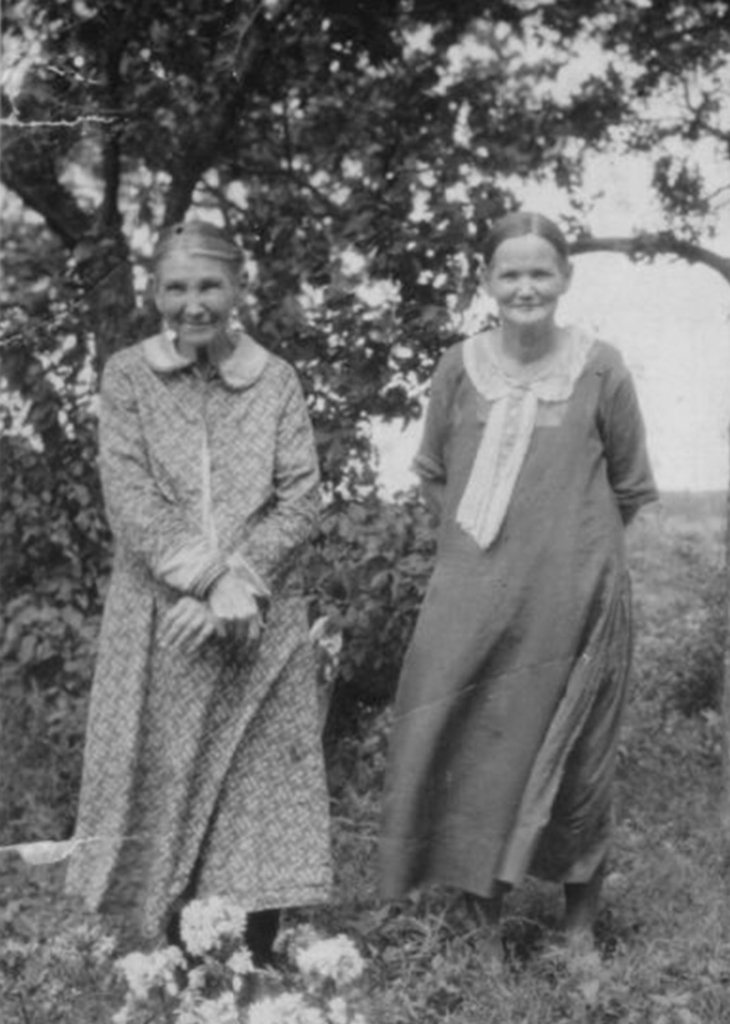
Elizabeth Ouilmette married Lucius (Louis) Ripley Darling on July 15, 1836. Elizabeth was one of eight children born to Antoine Ouilmette, known as one of the first residents of Chicago, and Archange Chevalier Ouilmette. Archange’s mother, Chopa, was the daughter of Potawatomi warrior and headman Naunongee from the Calumet River Potawatomi.
The family removed to Council Bluffs, Iowa, in 1837 and Lucius joined Waubansee’s Potawatomi band, serving as a trader. Their son William was baptized there on June 9, 1838. They had 13 children total: William, Francis L., Eliza, Lucius, Louis Oliver, Charles Nathan, and the remaining children died while infants.
The Treaty of 1846 required all the Potawatomi removed west to relocate on one reservation in Kansas, and the Darling family made their way there in 1847. Due to pressure from incoming settlers and business, the Potawatomi signed a treaty in 1861 that offered an opportunity to become U.S. citizens and receive land allotments. Although Elizabeth passed away before the process was finalized, Lucius and their children chose to receive individual plots of land and became members of the Citizen Potawatomi.
Hardin
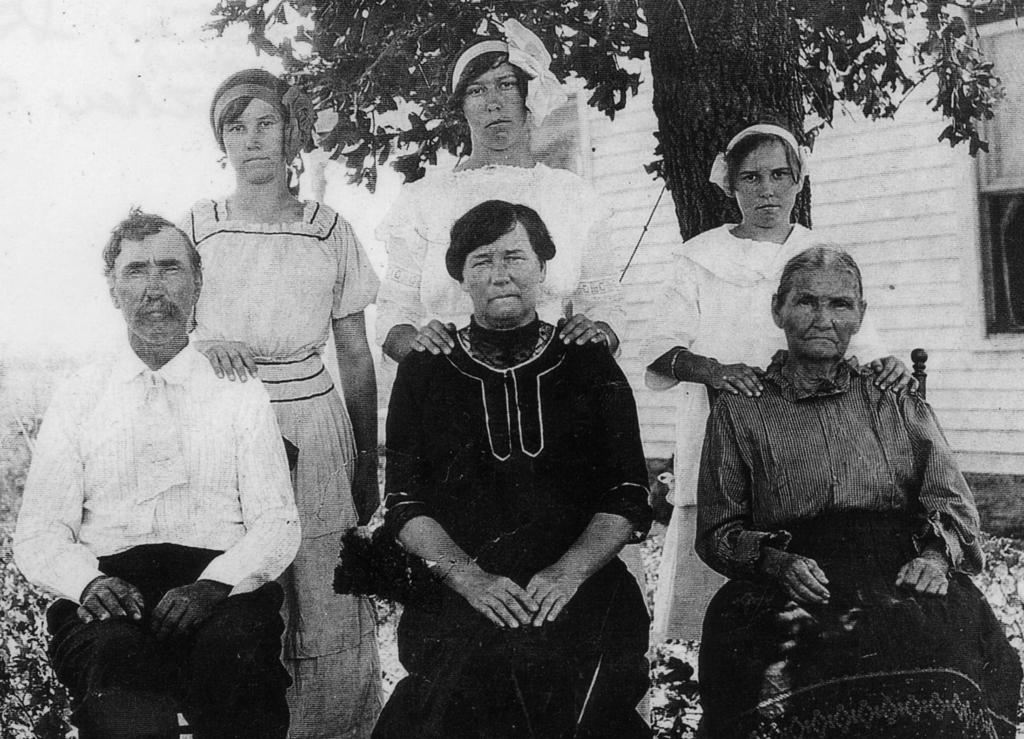
Theresa Laframboise Hardin Watkins Beaubien — Chee Chee — and her family removed to Council Bluffs, Iowa, before making the journey to the Potawatomi reservation in Kansas. Theresa was the daughter of Chief Joseph Laframboise and Therese Peltier. Joseph held a standing as one of the Chicago Chiefs, along with Chief Waubansee, Chief Thomas “Billy” Caldwell or Sauganash, and others. These leaders became involved in treaty negotiations across the Great Lakes region.
She married Allen Hardin, and they had three children: Mary, Theresa and Peter.
The Hardin family remained in Iowa until after the Potawatomi signed the Treaty of 1846. This agreement established a reservation near Silver Lake, Kansas, for all the Potawatomi west of the Mississippi. Theresa’s descendants would go on to serve as Tribal leaders, both volunteer and elected, through miliary service and more.
Higbee
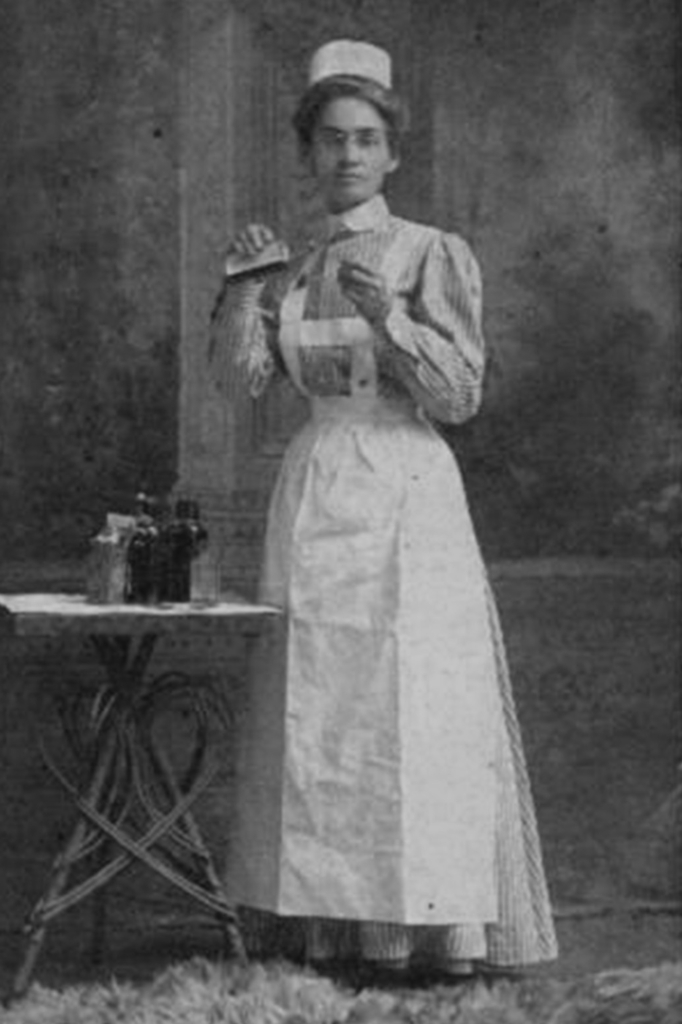
The Higbee’s Potawatomi roots began in the 1800s with the marriage of Julia Justine Bertrand and Alva Higbee. Julia’s parents, Madeline and Joseph Bertrand, were successful fur traders and business owners near Lake Michigan. Madeline was the daughter of Daniel Bourassa I and an unknown Potawatomi woman. Her mother was most likely a member of Potawatomi communities in the St. Joseph River Valley, whose villages were led by Chief Topinabee. Julia, born May 25, 1823, also grew up along the St. Joseph River in Michigan near the township named for her father.
A private school at the Carey Mission was run by the Bertrand community postmaster named Daniel C. Higbee. There, Julia met Daniel’s brother Alva, who later became her husband. They married in Bertrand on Oct. 4, 1848, before moving to the Potawatomi reservation in present-day Kansas in 1850.
The Treaty of 1861 separated the Potawatomi into two distinct groups and provided an opportunity to receive a land allotment and potentially become U.S. citizens. Those accepting the allotments became the Citizen Potawatomi. The Higbees and their nine children decided to receive allotments and become members of the Citizen Potawatomi.
Levier
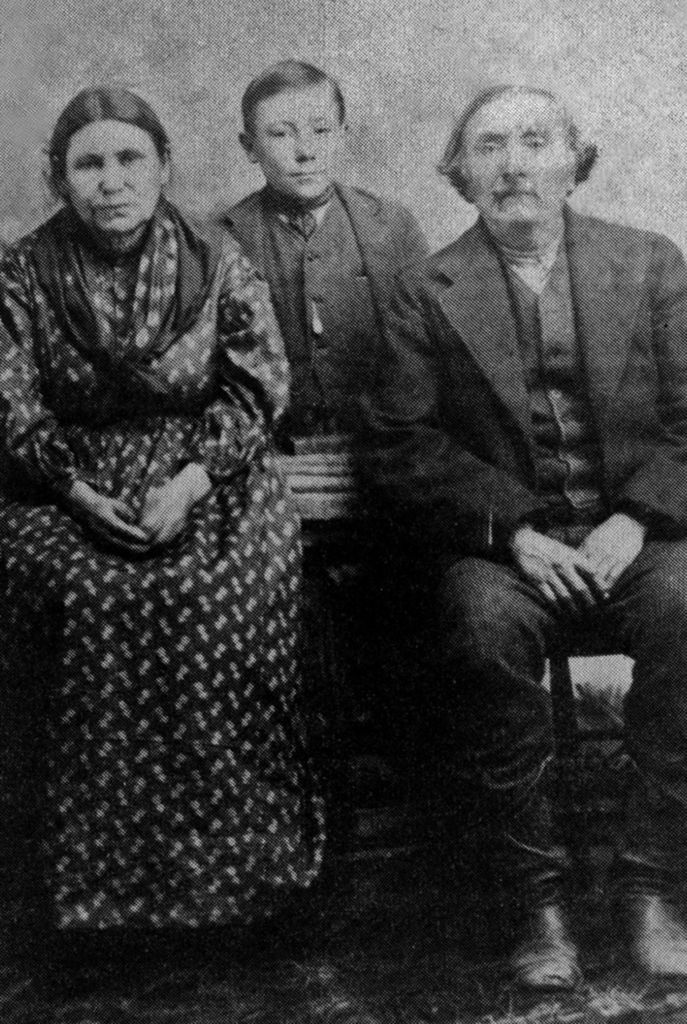
Under the terms of the Treaty of 1837, Potawatomi in Indiana gave up their lands in exchange for a reservation in Kansas. From 1837 to the early 1840s, they gradually moved to the Osage River or “Mission Band” Reserve.
Elizabeth Cadue, her father Peter Cadue, and his wife, Marguarita Kishnonckouy, were among the Potawatomi who established themselves in Kansas. Elizabeth was born in 1834 in Kansas. She married John (Laurence) Battese. Their children were Susan, Frank (P-nos-wah), Alice (Ze-ze-quah), Mary (Wa-me-go), Martha, Michel Lawrence, Walter, Julia and Ktequa Lucy.
When Kansas became a state in 1861, squatters and railroad companies eyed Potawatomi lands. The U.S. government pushed the Potawatomi from Kansas to Indian Territory under the Treaty of 1867. The Potawatomi used the treaty funds to acquire a reservation in Indian Territory.
Over the next 20 years, families and individuals gradually made the move from Kansas to Indian Territory. Elizabeth Cadue Battese’s descendants, including Martha Battese Levier Jackson, were among the Potawatomi who successfully made the treacherous journey and would later establish themselves in Indian Territory.
Lewis
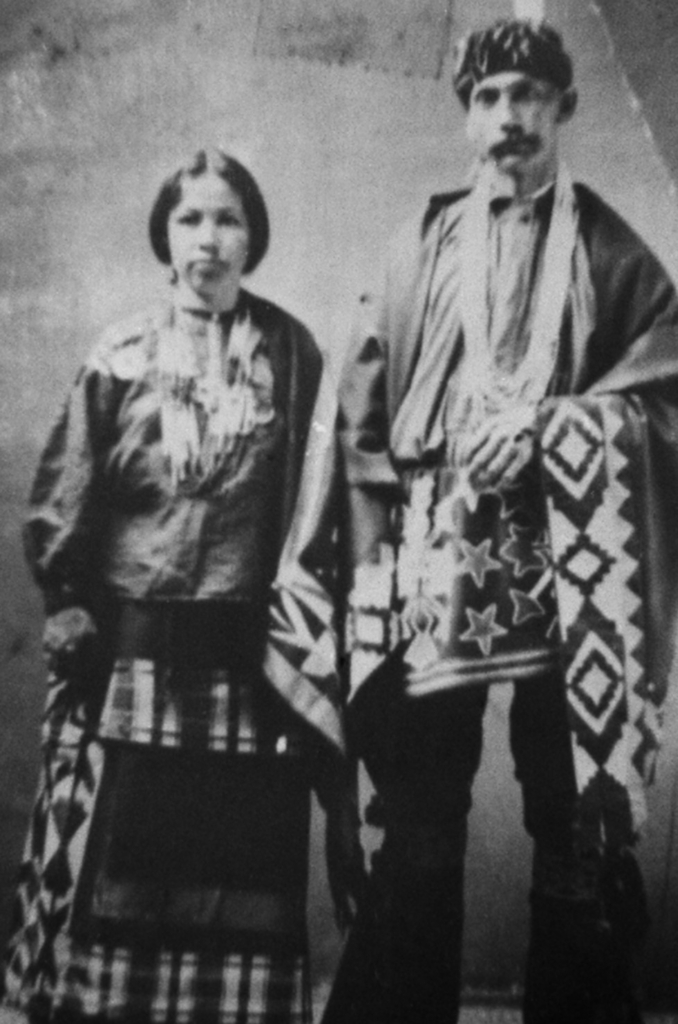
Wesley Lewis was born April 22, 1838, near Asthabula, Ohio, to Sylvester and Anna (Smith) Lewis. As an adult, he traveled with his older brother to Lawrence, Kansas, and later to the Henry Ward Beecher colony in Waubanse County, Kansas.
Wesley married Louise Bourassa in 1859.
On Jan. 21, 1866, Wesley married Matilda Bergeron, who was of Potawatomi and French heritage, in Louisville, Kansas. Matilda Bergeron Lewis was the daughter of Francis X. Bergeron and Watch-e-kee Zozetta (Josetta) Bergeron. She was born on Sept. 26, 1846, in Council Bluffs, Iowa.
Wesley and Matilda had a total of 11 children together. In 1891, he sold his Kansas farm and moved to an allotment in Oklahoma Territory, near present-day Wanette. In 1891, Wesley and his neighbors raised money to build the first schoolhouse, a 16-by-16 structure. The area’s first post office was located in the corner of the Lewis living room until a permanent one was established. He was also instrumental in establishing the community’s first cemetery by organizing with his neighbors to collect funds for the project.
Nadeau
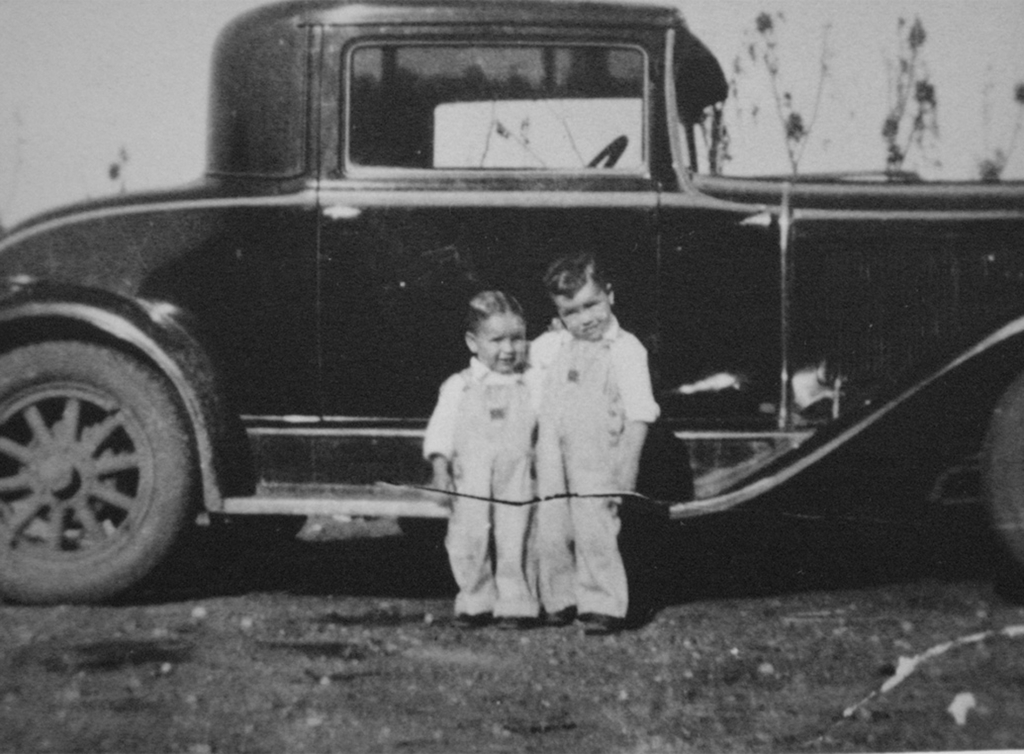
The story of the Nadeau family begins in France when Mascia dit Lavigne Nadeau and his wife, Jeanne Despins, had a son in 1637, named Joseph Ossany dit Lavigne Nadeau. Over the next four generations, the family lived in and around Berthier, Canada.
The family’s Potawatomi heritage was established when Peter and Mary Nadeau’s son, Peter Alexander, married a Potawatomi woman named Madeline Vieux on April 22, 1860. Madeline was the daughter of Louis and Charlotte Vieux.
Peter’s brother, Eli Gilbert, also married a Potawatomi woman. She was Magdalene Bourbonnais. The couple married on Jan. 1, 1835.
When Kansas became a state in 1861, the U.S. government began its final push to remove the Potawatomi from Kansas to Indian Territory. The Treaty of 1867 certified the purchase of allotments and surplus lands in exchange for approximately $150,000. The Potawatomi used the funds to acquire a reservation in Indian Territory.
Over the next 20 years, families and individuals gradually made the move from Kansas to central Oklahoma. The journey itself was dangerous, and families who arrived found nothing but empty prairies. Members of the Nadeau family who arrived in Oklahoma had to work hard to make a life for themselves, often clearing large acreages by hand and establishing infrastructure, homes and farms.
Negahnquet
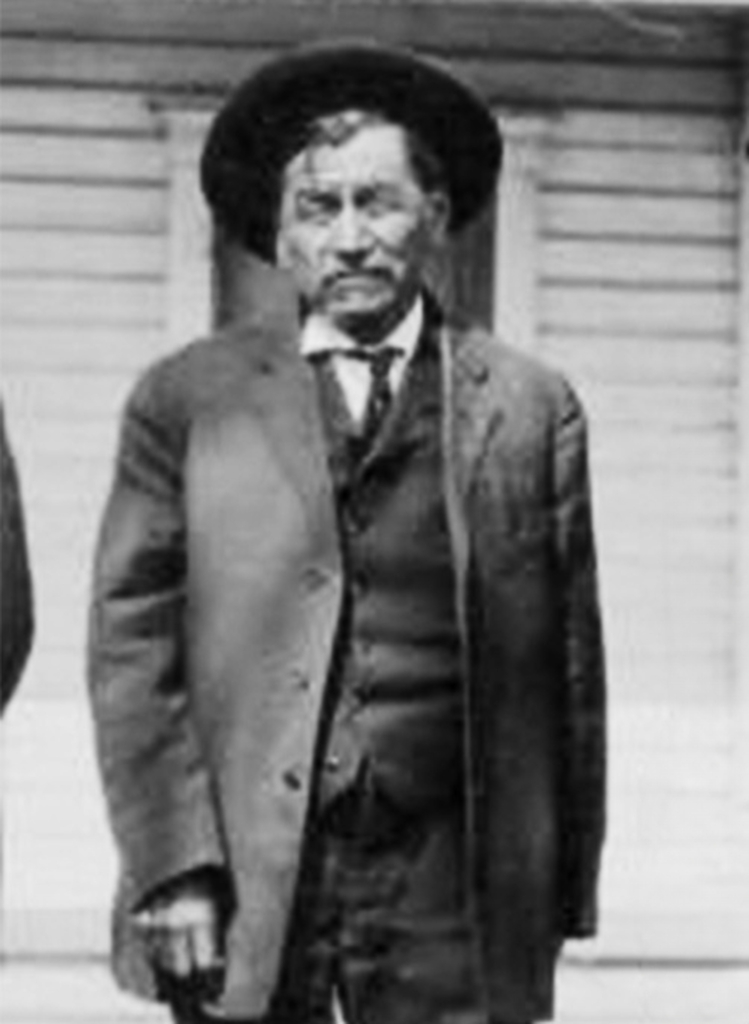
Ne-gahn-quet was married to Tchoksak. Their son was Stephen Ne-bah-qua Negahnquet. Stephen married Angeline Ke-ten-no Wa-was-suq. Their children were Rosalie, Albert, Joseph, John, Mary Fannie (Stephanie), Mary Celeste, Katherine (Mary), Stephen W., Rosalie Wawyotch and Thomas.
Joseph married Minnie Rebecca Couch. Their children were Joseph A., Anthony, Mary, James, Thelma, Maxine and Marie.
Born on the Kansas River Reservation, Stephen Negahnquet quickly rose to become a community fixture in Kansas. After the Treaty of 1867, he removed with his family to Indian Territory and was allotted several sections of land. He is listed on the 1872 Citizen Potawatomi allotment census.
On the new Oklahoma reservation, Stephen was elected to the Citizen Potawatomi Business Committee. He was among the first Tribal members to approve the founding of Sacred Heart Mission and provided resources to build the site. His children attended the mission school. Stephen’s son, Albert, was later ordained as a Roman Catholic priest.
Pambogo
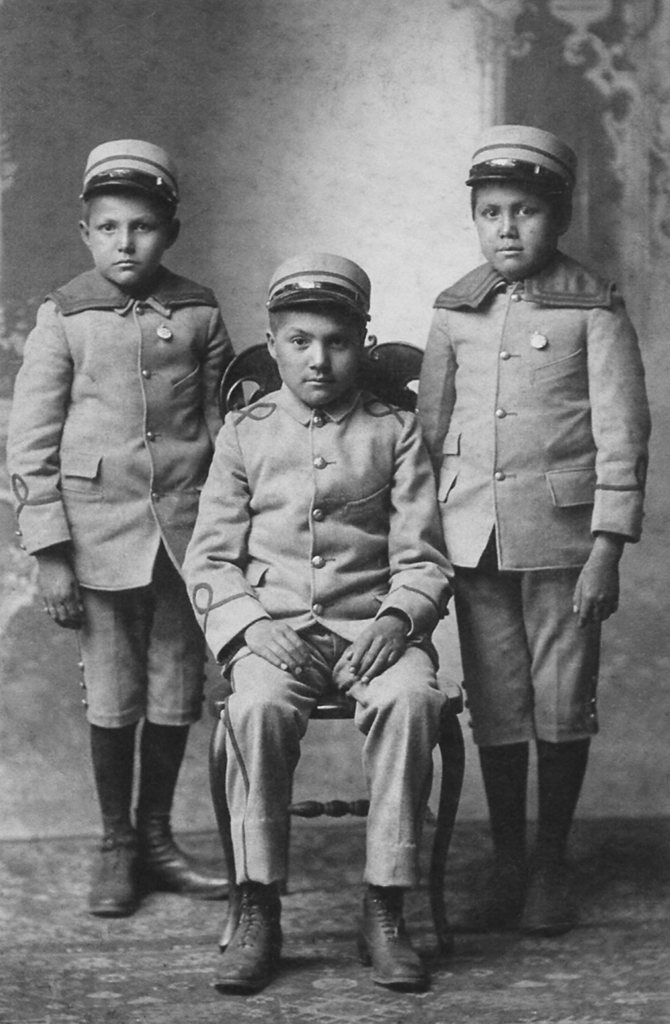
Louis Pambogo, born in 1823, married Ojequa, who was born in 1833. They had a son, John Baptiste, and a daughter, Josette.
As many people fled west to escape the U.S. Civil War, the Potawatomi entered into the Treaty of 1861 to allot their Kansas lands and become U.S. citizens. Prior to this, the Potawatomi had held land in common. The U.S. government pressured the Potawatomi to accept allotments so their land could be sold to settlers and railroad companies. Dozens of Potawatomi families would make the dangerous journey to Indian Territory to claim their individual allotments.
John Baptiste Pambogo married Po-to-go-qua. They had two children, but sadly, both children died young. John Baptiste then married Caroline Peltier. Sadly, their twins, a boy and a girl, died. They later had George, Alexander B., Josephine Alice, John B., Jr., Ahs-latt, Johnie and Alice.
Louis and Ojequa’s daughter, Josette, married John (Wak-shuk) Megah (Me-ga) at the Sacred Heart Mission. Josette and John Megah had a son named Joseph. The couple had five other children, but they died at a young age.
John Baptiste died on April 17, 1935, at age 75. At the time of his death, his son John was living in Oklahoma City, his son George had died young, about 20 years prior to his father’s death, his son Alex was living in Arkansas City, Kansas and his daughter was living out west with her husband.
Smith
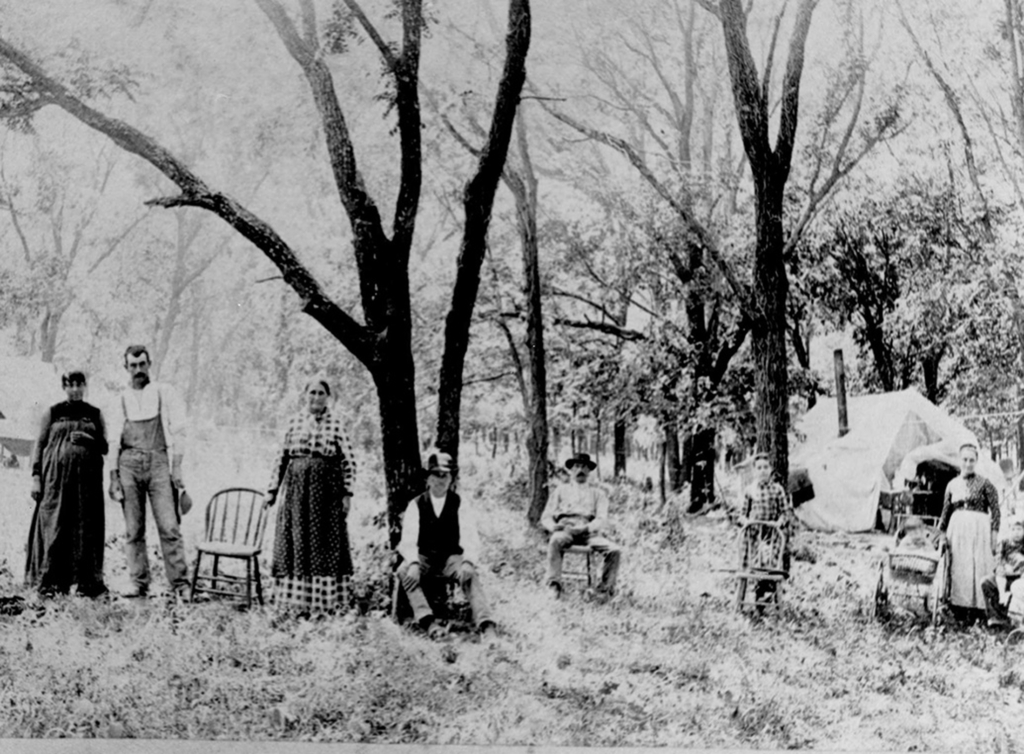
Frederic H. Countryman (Contraman) was born about 1795 and appeared on an 1823 Michilimackinac County, Michigan, voter list. He married a Potawatomi woman named En-do-ga and was fluent in Potawatomi. It is possible that a woman named Doga who appears in a George Winter watercolor sketch is actually En-do-ga. She was the niece of a respected Indiana Potawatomi leader named Naswawke. Frederic and En-do-ga had three daughters — Betsey, Nancy and Sarah.
In 1831, the Countryman family joined a large group of Potawatomi who were moving west to Paw Paw Grove. In 1834, the Potawatomi and the Countryman family were forced west again to Calhoun County, Kansas. Frederic appears in the Kansas Territory Census of 1855 and 1857. Their home was on the Potawatomi reservation south of the military road leading from Ft. Leavenworth to Ft. Riley, near Solider Creek, Kansas.
Following the 1833 treaty, the U.S. government paid Nancy, Sarah and Betsey cash grants in lieu of allotments, each for $600.
Several of Nancy’s descendants were listed on the 1887 Oklahoma allotment roll, including: Josephine Smith Bourassa, Frank Smith, Rachel Johnson Catick, Louisa Smith Storm Hartman, Zoe Smith Denton and Elizabeth Hartman Lynn.
The Citizen Potawatomi Nation Cultural Heritage Center provides resources to keep the Tribe’s history safe and accessible for generations to come. One key way the Nation does this is through the CHC’s archives. If interested in assisting preservation efforts by providing copies of Citizen Potawatomi family photographs, documents and more, please contact the CHC at 405-878-5830. Learn more about the Family Reunion Festival at cpn.news/festival, and find research resources online at potawatomiheritage.com.
